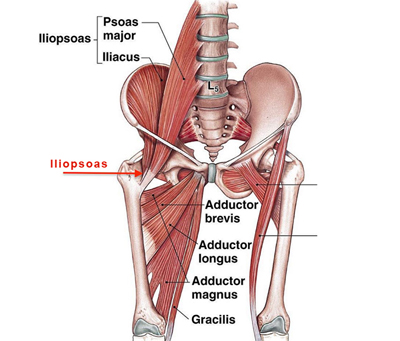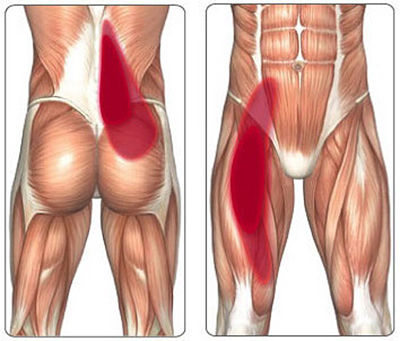Hip Sports Injury – lliopsoas tendinitis
Hip Sports Injuries - iliopsoas tendinitis
What is iliopsoas tendinitis?
This is an uncommon cause of pain in the hip and groin. This condition may occur as a result of overuse associated with repeated hip flexion and rotation of the femur eg. in professional dancing, gymnastics and playing football.
It has been associated with inflammatory arthritis, acute trauma, and overuse syndromes, women are more commonly affected than men and it tends to affect younger patients. It can also occur after hip replacement particular if the socket is left proud of the bony pelvis, causing the tendon to rub and become inflamed.
1. Psoas tendon is arrowed to point out site of possible release.
2. Pattern of pain distribution in problems of the psoas tendon.
What are the symptoms?
Presentation may be with groin pain - with an associated snapping sensation or a thud. A palpable mass may be present in the groin due an enlargement of iliopsoas tendon and associated bursa.
There may be pain at rest made worse with activity. Pain may also be present with simple activities - such as putting on socks and shoes in the severe cases.
What investigations are needed?
How can it be managed?
Non-operative treatment, which includes rest and non-steroidal anti-inflammatory medication. Physiotherapy with a stretching exercise programme has been recommended for the treatment of this condition. Corticosteroid/local anaesthetic injection is a non-operative management option that may be required if the exercises have had no effect. This is usually carried out under USS guidance for accuracy.
If all this fails with on-going symptoms and disability then surgery may be required. Mr Aslam Mohammed will discuss the details of this with you.
What does the surgery involve?
The surgery usually requires a keyhole procedure. Before you make your decision to have surgery Mr Aslam Mohammed will explain the details of the actual surgery and procedure required. He will also discuss and go over the potential risks and benefits of the operation.
Hip arthroscopy and examination of the peripheral compartment of the hip joint is undertaken and the iliopsoas tendon can be located and partially and released to take the tension off and stop the catching and reduce the symptoms.
What are the risks?
Click on for details of risks of Hip Arthroscopy
What are the outcomes?
Outcomes are generally good with improvement symptoms and reduced clicking. Recovery is slow and prolonged over many months. Physical therapy exercises need to be continued to prevent reoccurrence.
- Arthritis
- Hip Arthritis
- Hip Replacement
- Hip Sports Injury
- Hip Arthroscopy
- Hip Labrum Tears
- Hip Femoro Acetabular Impingement
- Psoas Tendon Snapping
- Soft Tissue Hip Problems
North West Hip & Knee Clinic
Services provided:
• Keyhole (minimally invasive)
• Hip and Knee Surgery
• Hip and Knee Joint Replacement
• Hip and Knee Sports Injury
• Hip Arthroscopy, FAI and Labral Surgery
• Knee Arthroscopy - Meniscus surgery
• Knee Arthroscopy and ACL / PCL
• Ligament Reconstruction
• Biologics – PRP, Stem Cell
• Cartilage Regeneration
Mr Aslam Mohammed Consultant Hip and Knee Surgeon

